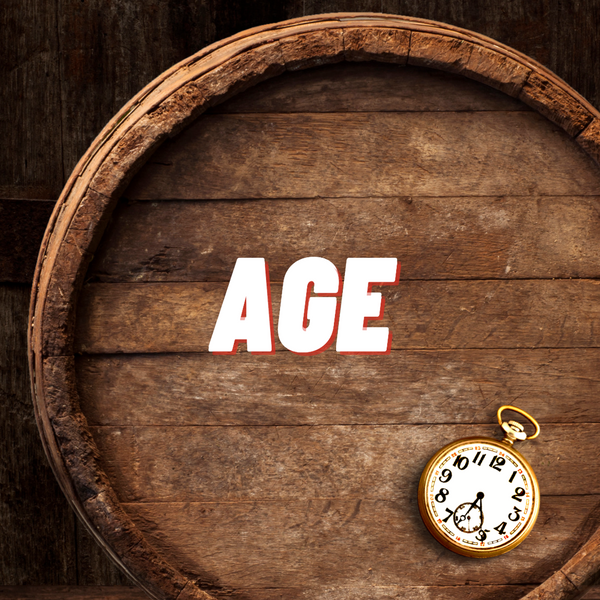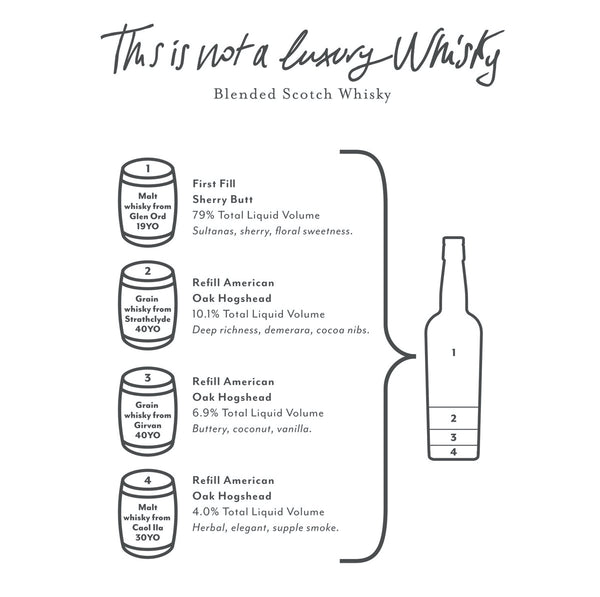
What the heck is that?
Many whiskies have big numbers printed on their labels. Numbers mean age. Higher age means better whisky.
Or is it really that simple? Not quite.


The “age” of a whisky refers to the minimum amount of time spent by the spirit maturing in a wooden cask. Notice that I mentioned “minimum”. This is because bottlers are only allowed by law to refer to the youngest component in every bottle of whisky. Whisky regulations in major whisky-producing countries, like Scotland or Ireland, dictate that bottlers are only allowed to print the age of the youngest component of their whiskies.

This means that you could well have a tanker full of 30-year-old Glenfiddich. Add a teaspoon of 8-year-old Glenfiddich to the mix and the resulting mixture can only be bottled as “8 Years Old”

Another thing: unlike wines, spirits do not grow older when kept in the bottle. A whisky (or rum) only ages when it is in contact with its wooden cask. The aging process stops when bottled. After the whisky is put in glass bottles, it remains Forever 21.
Who cares?
The age of whisky plays a critical role influencing its taste, its price, its cost of production and its availability.
The magic of maturation tends to smooth out harsher notes in the spirit and also creates more complexity in the flavour. Compounds from the wood impart flavours to the spirit, adding notes of vanilla, caramel, toffee, chocolate, raisins, dark fruits or even coconut – the older the whisky, the more intense this flavours become.
It’s also intuitive that older whiskies are more expensive. Why?
Older whiskies cost more to produce because for every year spent maturing in a wooden barrel a percentage is lost. Angels come down and steal some of the whisky back to heaven. The percentage of loss ranges from between 2% to 10% depending on the climate and region where the whisky is aged.

Finally, for all the resources and technology available to us, there’s just no way distilleries can fast-forward the aging process of whisky. Japanese whisky-makers learnt this the hard way when demand for Japanese whiskies shot up in the mid 2010s. As they did not have enough aged stock, many lines of age-statement whiskies had to be put on hiatus while we wait for the spirit to come of age.
If there is one thing to remember, what is it?
The older the whisky, the better the whisky? That’s wrong.
Age isn’t the be all and end all. It is instinctive to assume older whiskies are definitely better, but this would be misguided.
Whisky bottlers tend to search for “optimal ages” with the best balance of flavour to bottle their whiskies. Younger whiskies that have not been exposed to too much wood tend to taste brighter, fresher and stronger in alcohol content. Older whiskies would usually have absorbed more flavour compounds from the wood, and therefore display more intense flavours and depth.
Exceptions are also very common in the world of whiskies. There are young whiskies that taste very rich and rounded. There are 30-year-old whiskies that still taste bright and fresh.
And while young whiskies aren’t always bad, there is such a thing as “too old” for whiskies. Too much maturation in a cask and you end up with “over-oaking”, a situation where woody notes completely take over the whisky in an unpleasant manner. The late Italian whisky expert, Silvano Samaroli, has in fact warned against excessive aging: “A Whisky rarely reaches thirty years of aging successfully” because the cask could drown out the personality of the spirit.







